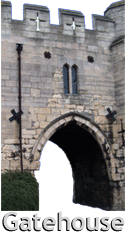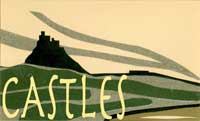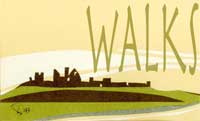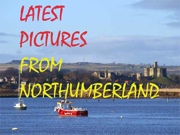|
|
|||||||||||||||||||||||||||||||||||||||||||||||||||||||||||
|
Dunstanburgh Castle
Location OS Landranger sheet 75 NY 977633 How to get there Walk, from Craster or Embleton Steads Route to Craster- Travelling north turn off the A1 Alnwick Bypass onto the coastal route B1340 through Denwick. Leave the B1340 at next junction taking the right fork and then turn almost immediately left at the next junction, this only a few yards. Then follow the signs straight down to Craster. Being careful of the crossroads with the B1339. The car park is on the right as you turn into the village The castle has public access and it is in the custody of English Heritage click on first image for wide view |
||||||||||||||||||||||||||||||||||||||||||||||||||||||||||
 |
|||||||||||||||||||||||||||||||||||||||||||||||||||||||||||
 |
 |
 |
|||||||||||||||||||||||||||||||||||||||||||||||||||||||||
 |
 |
 |
|||||||||||||||||||||||||||||||||||||||||||||||||||||||||
 |
 |
||||||||||||||||||||||||||||||||||||||||||||||||||||||||||
 |
 |
 |
|||||||||||||||||||||||||||||||||||||||||||||||||||||||||
 |
|||||||||||||||||||||||||||||||||||||||||||||||||||||||||||
 |
 |
 |
|||||||||||||||||||||||||||||||||||||||||||||||||||||||||
 |
This is the largest Castle in Northumberland, covering 11 acres. Work started 1313.
|
||||||||||||||||||||||||||||||||||||||||||||||||||||||||||
 |
|||||||||||||||||||||||||||||||||||||||||||||||||||||||||||
 |
 |
||||||||||||||||||||||||||||||||||||||||||||||||||||||||||
|
NU 257218/Ruin/EH C14 castle situated on a coastal headland in Northumberland. The castle was built for Thomas, second Earl of Lancaster with the first phase of construction taking place between 1313-1325 (licence granted in 1315). The gatehouse was remodelled as the castle's keep in the late 1380's with a new gatehouse built. This remodelling was undertaken by Henry of Holme for John of Gaunt. The site of the castle encloses an area of 11 acres. Thomas of Lancaster's Gatehouse is situated at the south west corner backed by a small inner ward. John of Gaunt's Gatehouse is situated on the west curtain immediately beyond the inner ward, approached by a barbican with a mantlet wall running to an outer gate adjoining Lancaster's Gatehouse. Constable's Tower, the residence of the castle's commanding officer, lies midway along the south curtain. Behind the tower are a complex of buildings for his own use and that of his staff. At the south east corner is Egyncleugh Tower, an important tower which commanded the 'clough' under its east wall. Lilburn Tower stands at the north end of the west curtain. This was a watchtower and a residence for soldiers, with a postern at its foot. The castle was built from sandstone with a whinstone rubble core, except for limestone in the east curtain. Earl Thomas, who seems to have built the castle as a refuge rather than a residence, was executed in 1322 and the fortress passed into Royal hands. John of Gaunt as lieutenant of the Marches towards Scotland ordered the late C14 alterations. Before the alterations were complete the castle withstood a Scottish attack in 1384. Held for the Lancastrians in the Wars of the Roses, Dunstanburgh fell to the Earl of Warwick after a siege. In the Second World War a pillbox and foxhole was built and a corps of the Royal Armoured Corps who were installed amongst the ruins. Finds of Romano-British pottery indicates earlier occupation of the headland. Dunstaburge; Dunstanborough. |
|||||||||||||||||||||||||||||||||||||||||||||||||||||||||||
 |
|||||||||||||||||||||||||||||||||||||||||||||||||||||||||||
 |
 |
||||||||||||||||||||||||||||||||||||||||||||||||||||||||||
 |
|||||||||||||||||||||||||||||||||||||||||||||||||||||||||||
| Old postcard c1907aw | |||||||||||||||||||||||||||||||||||||||||||||||||||||||||||
|
The Lilburn Tower by H.Thomas and by Finden c1842aw
|
|||||||||||||||||||||||||||||||||||||||||||||||||||||||||||
 |
|||||||||||||||||||||||||||||||||||||||||||||||||||||||||||
|
Post card Dunstanburgh Castle from the air 1960's
|
|||||||||||||||||||||||||||||||||||||||||||||||||||||||||||
 |
|||||||||||||||||||||||||||||||||||||||||||||||||||||||||||
| The Castle by Buck 1728 with thanks to A. Rowland | |||||||||||||||||||||||||||||||||||||||||||||||||||||||||||


